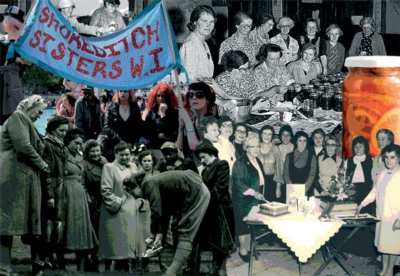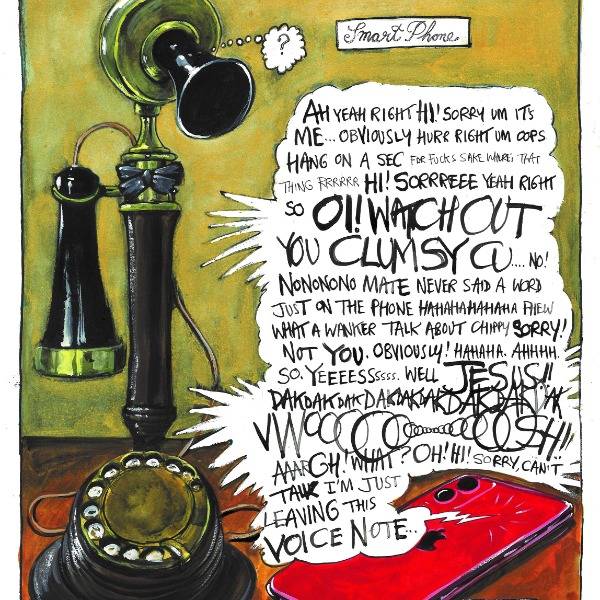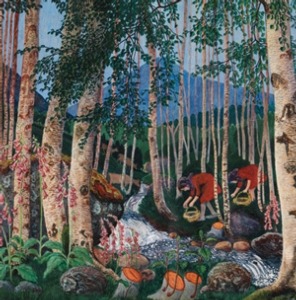 Doughty women, fierce campaigns, domestic details, practical advice and companionship – it all sounded strangely familiar. And the more I delved into A Force to Be Reckoned With, Jane Robinson’s lively homage to the Women’s Institute, the more parallels I found with the programme I edited for many years: BBC Radio 4’s Woman’s Hour.
Doughty women, fierce campaigns, domestic details, practical advice and companionship – it all sounded strangely familiar. And the more I delved into A Force to Be Reckoned With, Jane Robinson’s lively homage to the Women’s Institute, the more parallels I found with the programme I edited for many years: BBC Radio 4’s Woman’s Hour.
Founded just over a century ago, the Women’s Institute’s original aims were to promote knowledge of “Household Science” – with particular attention to sanitation, food values and childcare. Woman’s Hour, created just after the Second World War, also aimed to help women rebuild home and family life after the ravages of war. And both institutions very quickly outstripped these modest ambitions.
Almost from the beginning, the Women’s Institute instigated discussions and campaigns on a huge variety of social issues: for better housing, education for women, equal pay – and its courageous support for the 1920s Bastardy Bill, in response to the number of illegitimate children resulting from the Great War. Similarly, from the year it began, Woman’s Hour was covering issues like equal pay, the treatment of home workers, the needs of working women, as well as offering frequently graphic advice on gynaecological health.
And both institutions, too, abounded in practical advice on homecare. The Women’s Institute was famous, or perhaps notorious, for its passion for domestic crafts – displayed in fêtes and exhibitions, and even resulting in a college of crafts, founded in 1922. But these practical skills really came into their own during wartime. At the beginning of the First World War, after a disastrous summer harvest that had devastated the country’s food reserves, the WI stepped in. They organised a war savings association, started countrywide rabbit clubs for producing meat and fur, began toy-making enterprises and grew fruit and vegetables to help feed local communities. And there was, of course, jam.
Jam may have been, and perhaps still is, the defining image of the Women’s Institute. But it also represents one of its great triumphs. “Both world wars,” Jane Robinson tells us, “were marked by a glut of plums at home; these, picked and processed by the WI, supplied precious Vitamin C to an ill-nourished population, as well as fruit-stones to provide the charcoal for gas-mask filters.”
During the Second World War, the contribution of the WI was even more vital. Once again, there was fervent rabbit breeding and jam making – this time, members themselves had learned to do their own canning. But perhaps the WI’s most impressive achievement was its organisation of the evacuation of city children to the country. Three million people were billeted on to sometimes delighted but more often horrified rural hosts. In nearly 2,000 responses to a WI questionnaire, members wrote of shockingly filthy and under-nourished children, poorly clothed and badly behaved. “Of 840 children who arrived at Dorchester WI in Dorset, 229 had lice, 19 had skin diseases and habitually wet the bed.
One distraught WI member reported a family from Bethnal Green (whose mother was present) climbing on to the bed to urinate and defecate; another had to cut her charges free of the ragged clothes into which they had been stitched who knows how long ago.”
But the great successes were that many of these impoverished city children began to grow in health and stature, as they were exposed to the benefits of wholesome food, fresh air and sunshine. And, just as crucially, the WI experience revealed the disgraceful state of the country’s city slums – and led to the campaign to replace them.
Another wartime contribution was the mobilisation of salvage collectors, who would scour the villages for waste paper, scrap metal, rubber, rags and bones and kitchen refuse for compost and pig-club fodder. The WI magazine, Home and Country, explained that: “One envelope made fifty cartridge wads, one broken garden fork plus an old bucket made a tommy gun; and every pound of bones (except fishbones), after cooking, contains enough fat to provide 2oz Glycerine, which makes double its weight of Nitro-glycerine, a very high explosive.”
It’s telling details like these that reminded me of how, right from its inception, Woman’s Hour, too, would keenly offer practical make-and-mend advice for an austerity-riven population. In those early years after World War II there were talks on how to knit your own staircarpet, how to bleach those blackout curtains, how to deslime your flannel.
What the WI – and Woman’s Hour – have always excelled in is in offering companionship to otherwise isolated women. From its beginnings, the WI was determinedly non-sectarian and non-hierarchical. Its founders – including luminaries like the bluestocking academic Inez Ferguson, the feisty Canadian organiser Madge Watt and the aristocratic Lady Denham, all made it a basic principle that the WI would welcome members from all backgrounds. It was an association for intelligent, resourceful, capable women of all classes.
Those much-derided tea breaks and tea parties, such an intrinsic feature of all WI meetings and events, were a valuable catalyst enabling women to talk, to unburden themselves, to exchange experiences. The WI tea kettle was the origin of that later development of the 1970s: consciousness-raising groups. Meanwhile, for all those born-again housewives, suddenly at home again after the war, Woman’s Hour provided a haven and a lifeline, timed for the de rigueur two o’clock babyfeed.
Otherwise isolated or under-occupied women discovered another great strength in the WI: they learned how to run committees. Until then, women had not had much opportunity to chair or minute meetings, to recruit members or form an agenda. Local WIs gave them the training – as well as the confidence – to speak in public. It was this confidence that allowed women from all over the country to speak on platforms and, gradually, to be invited to broadcast. WI figures began to appear on talk radio programmes like the Brains Trust and, naturally, their progress was also followed by Woman’s Hour itself. Though Robinson’s failure to mention the programme in her excellent book did strike me, given my own association with it, as regrettable – especially given the parallel development of the two enterprises.
Despite the range of intellects, talents and experiences of WI members, it has always been sensitive to ridicule and, worse, to being patronised. And that was what led to the public humiliation of the former Prime Minister Tony Blair. It’s telling that Jane Robinson chose to begin her book with the episode when he addressed the WI annual general meeting on June 7, 2000, at the request of Tessa Jowell, Minister for Women.
In fact, the organisers had not jumped at the opportunity. They feared that Blair’s appearance may compromise their strictly non-political stance. He was welcome only as Prime Minister, and not as party leader. “Remember that we are intelligent women,” advised the WI Chairman (sic) Helen Carey. “Don’t patronise us.”
But patronise he did, and further infuriated the gathering by trampling on their sacred non-political precept: he gave a rambling party political sermon that resulted in the famous slow handclap signifying collective disapproval. He had underestimated the WI – something you do at your peril.
On that memorable visit Tony Blair committed an even more fatal gaffe (not recorded in Robinson’s account): he didn’t know the words to the WI anthem “Jerusalem”. This oversight was, at the very least, discourteous. But more than that, it was a failure to recognise the power of the WI.
“Jerusalem” had been a rather contested anthem; the Blake poem was first set to music by Hubert Parry in 1916 to brace the spirits of the nation at time of war. Then the suffragette Millicent Fawcett attempted to claim it for her cause. Finally it was wrenched from her by a WI suffragist, Grace Hadow, who thought it more appropriate than the watery hymns that until then had characterised WI meetings. Despite opposition from some quarters, Hadow won the day, identifying a rousing song which could “bind members together in one great, unbreakable sisterhood.”
“The sound of ‘Jerusalem’, sung by thousands of full-throated women in one building,” asserts Robinson, “is inspirationally greater than the sum of its parts.” The very idea of “Jerusalem” conjures up, for some, the old, insulting stereotypes of country housewives doing nothing more ambitious than baking scones and going on the occasional coach trip. But this association is as mistaken as the underestimation of jam-making.
Far from merely a cosy kitchen habit, jam represents the application of household skills for practical, mass good, while “Jerusalem”, for the WI, stands for a devotion to helping one’s country through work, through organisation and through education.
The WI does not have the massive membership of its glory years, though it did enjoy a resurgence of interest with the antics of the Calendar Girls, now immortalised on film, who raised money for charity by posing for a nude calendar. It can still boast more than 200,000 members.
It may have lost its way a little during the second wave of feminism in the 1970s, its voices drowned by the more raucous ones of the women’s liberation movement. But, claims Robinson, it was the WI that gave rise to that movement. It was founded, she says, “by the feistiest women in the country. Its purpose was to give village women a voice, and the courage to use it in speaking to one another and to the world beyond.” And even the author herself admits to being surprised at her discovery that her history of the Women’s Institute turned out to be “a story about the invention of feminism in this country.”
A Force to Be Reckoned With: A History of the Women’s Institute by Jane Robinson will be published as a paperback in September by Virago

